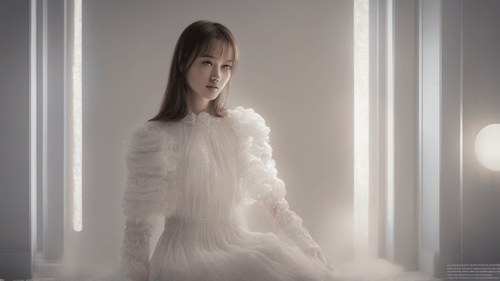
Introduction
In the realm of artificial intelligence, a groundbreaking innovation has emerged, captivating the imagination of creators, artists, and technology enthusiasts alike: Text to Image AI. This transformative technology bridges the gap between textual descriptions and visual representations, igniting a revolution in creativity and imagination. In this comprehensive article, we delve into the intricacies of Text to Image AI, exploring its applications, benefits, and how it reshapes the way we perceive and interact with images.
From Text to Image AI: Exploring the Frontier of Creativity
Understanding Text to Image AI
At its core, Text to Image AI harnesses the power of deep learning algorithms to generate images based on textual descriptions. This remarkable technology interprets the nuances of language and converts them into vivid visual depictions, blurring the line between words and images. With the ability to translate abstract concepts into tangible visuals, Text to Image AI opens a world of creative possibilities.
The Inner Workings of Text to Image AI
Delving into the technical aspects, Text to Image AI relies on generative adversarial networks (GANs), a sophisticated framework where two neural networks collaborate to create hyper-realistic images. One network generates images, while the other evaluates their authenticity. Through continuous refinement and iteration, Text to Image AI learns to produce images that closely align with textual descriptions, achieving astonishing levels of accuracy and creativity.
Applications That Transcend Boundaries
Text to Image AI finds its application across diverse fields, revolutionizing the way we communicate, create, and innovate.
Visual Storytelling Enhanced
Envision crafting captivating narratives where every scene and character can be brought to life through Text to Image AI. Writers and storytellers can now seamlessly transform their words into visually immersive experiences, captivating readers on a whole new level.
Architectural Visualization Transformed
Architects and designers can leverage Text to Image AI to translate blueprints and design concepts into photorealistic visuals. This enables clients to envision spaces and structures with unprecedented realism before construction even begins.
Fashion and Design Evolution
Fashion designers can now manifest their couture visions with remarkable accuracy. Text to Image AI generates lifelike renditions of clothing designs, enabling designers to refine and visualize their creations before hitting the runway.
Gaming and Fantasy Realized
The gaming industry embraces Text to Image AI to populate virtual worlds with stunning visuals. Game developers can effortlessly generate characters, landscapes, and assets, enriching gameplay and elevating user experiences.
The Advantages of Text to Image AI
Unleashing Imagination and Creativity
Text to Image AI transcends the limitations of human imagination, converting abstract descriptions into concrete visuals that spark creativity and innovation. This technology empowers creators to visualize concepts that were previously confined to the realms of thought.
Accelerating Design Cycles
Design iterations often consume substantial time and resources. Text to Image AI streamlines this process by rapidly generating visuals that align with textual input, expediting design cycles and decision-making.
Enhancing Communication
In fields like architecture and design, effective communication is paramount. Text to Image AI serves as a universal language, enabling seamless communication between professionals and clients through visual representations that leave no room for ambiguity.
Breaking Language Barriers
Text to Image AI transcends linguistic barriers, allowing individuals from diverse cultural backgrounds to convey ideas and concepts through universally understood visuals.
Precision and Customization
The AI's ability to meticulously interpret textual descriptions ensures a high degree of precision and customization. Whether it's a specific shade of blue or the curvature of a building, Text to Image AI captures details with unparalleled accuracy.
Challenges and Future Prospects
Navigating Ethical Considerations
As with any advanced technology, ethical considerations arise. Questions surrounding copyright, authenticity, and the potential misuse of generated images prompt us to critically evaluate the responsible use of Text to Image AI.
Advancing Realism and Complexity
The future holds exciting possibilities for enhancing the realism and complexity of images generated by Text to Image AI. As algorithms evolve and computational power increases, we can anticipate a new era of visually stunning creations.
Diverse Modalities and Multi-Sensory Experiences
Imagine a world where Text to Image AI extends beyond visual domains, producing multisensory experiences that engage touch, sound, and even taste. This tantalizing prospect could reshape how we perceive and interact with content.
FAQs
How does Text to Image AI work?
Text to Image AI employs generative adversarial networks (GANs) to convert textual descriptions into lifelike images. One network generates images, while another evaluates their authenticity, resulting in highly realistic visuals.
Can Text to Image AI replace human artists?
Text to Image AI augments human creativity but doesn't replace it. While AI excels at translating descriptions into visuals, human artists infuse emotions, unique perspectives, and cultural nuances that remain irreplaceable.
Are there limitations to Text to Image AI?
Text to Image AI can struggle with highly abstract or vague descriptions. Additionally, ethical considerations and potential misuse of generated images require careful attention.
How is Text to Image AI used in education?
Educators leverage Text to Image AI to enhance learning materials. Complex concepts can be visualized, making them more accessible and engaging for students.
What industries benefit from Text to Image AI?
Text to Image AI finds applications in storytelling, architecture, fashion, gaming, advertising, and more. Its ability to convert descriptions into visuals enhances communication and creativity across diverse industries.
What does the future hold for Text to Image AI?
The future promises even more sophisticated and diverse applications. Advancements in realism, multi-sensory experiences, and ethical considerations will shape the evolution of Text to Image AI.
Conclusion
In the ever-evolving landscape of artificial intelligence, Text to Image AI stands as a beacon of creative transformation. Its ability to bridge the gap between words and images has far-reaching implications, reshaping industries and unlocking new dimensions of imagination. As we navigate the intricacies of ethical considerations and technical advancements, the journey from text to image unfolds, inviting us to explore, innovate, and redefine the boundaries of human creativity.